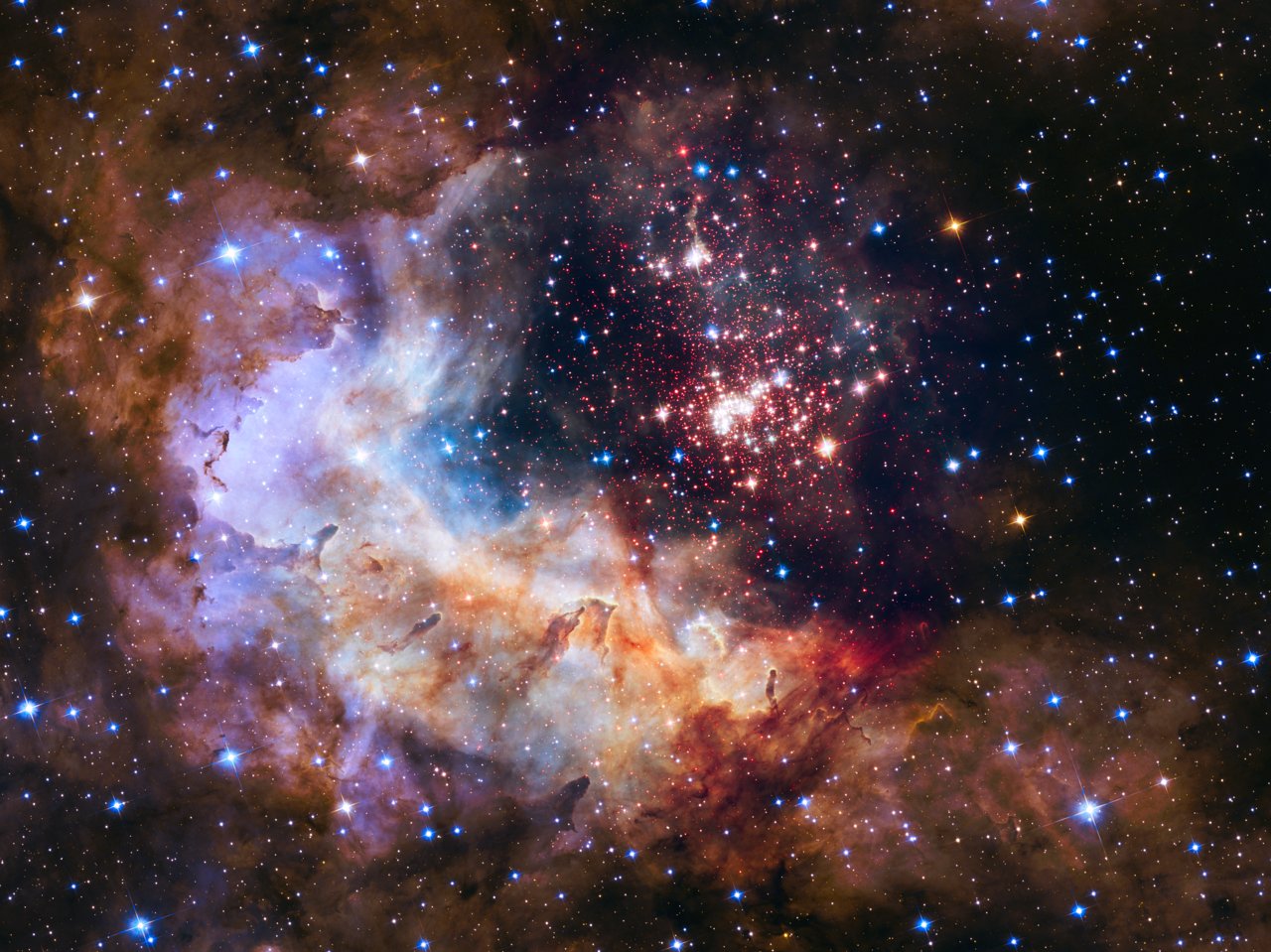
This new NASA/ESA Hubble Space Telescope image shows ghostly green filaments, lying within the galaxy Teacup (also known as 2MASX J14302986+1339117). This filament was illuminated by a blast of radiation from a quasar — a very luminous and compact region that surrounds the supermassive black hole at the centre of its host galaxy.

The image's central region, containing the star cluster, blends visible-light data taken by the Advanced Camera for Surveys and near-infrared exposures taken by the Wide Field Camera 3

This new image from the NASA/ESA Hubble Space Telescope captures two galaxies of equal size in a collision that appears to resemble a ghostly face. This observation was made on 19 June 2019 in visible light by the telescope’s Advanced Camera for Surveys

If placed in the middle of our solar system, the star VY Canis Majoris would engulf all the planets out to Saturn's orbit. This monster, appropriately called a red hypergiant, is as bright as 300,000 Suns